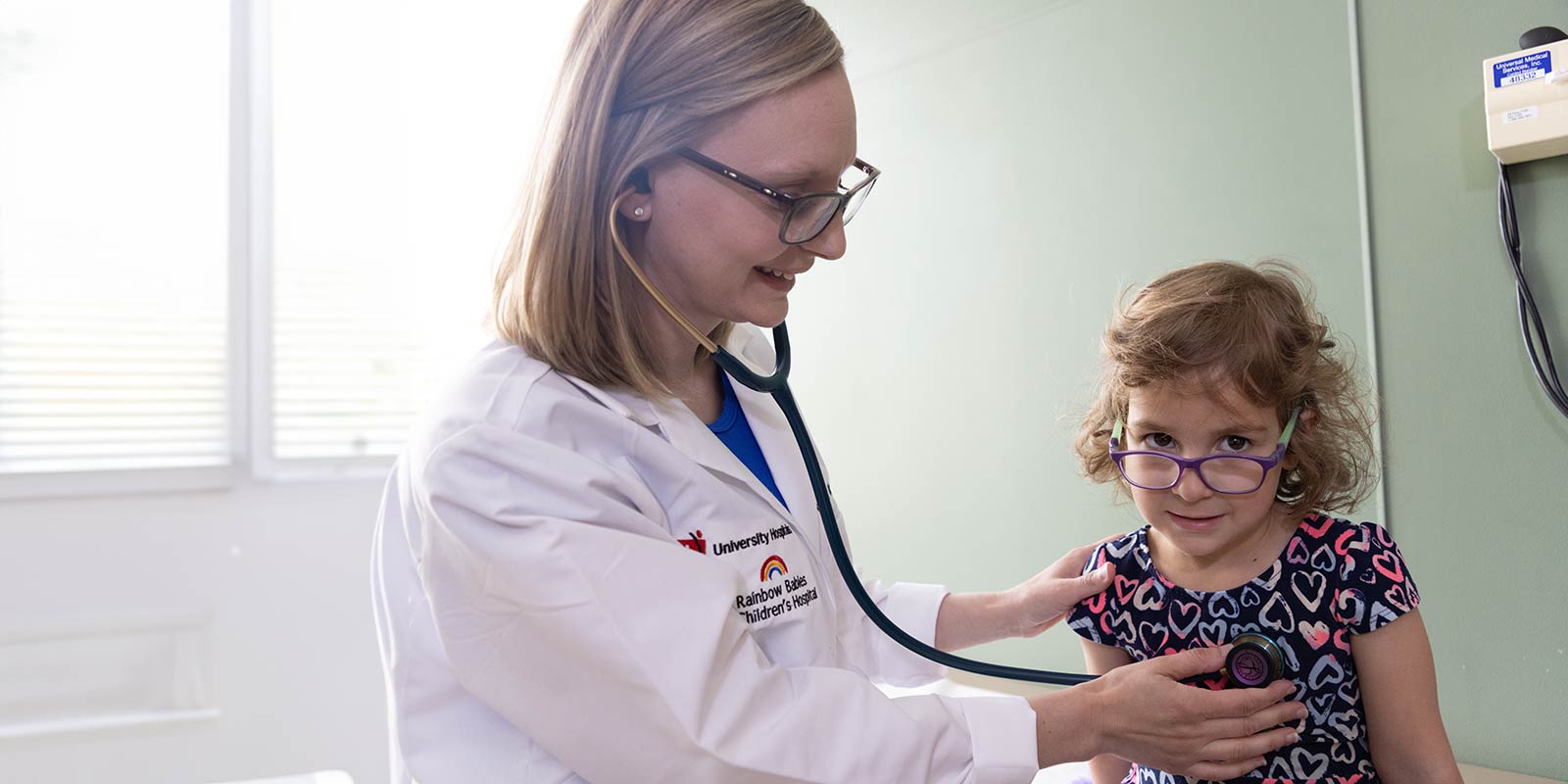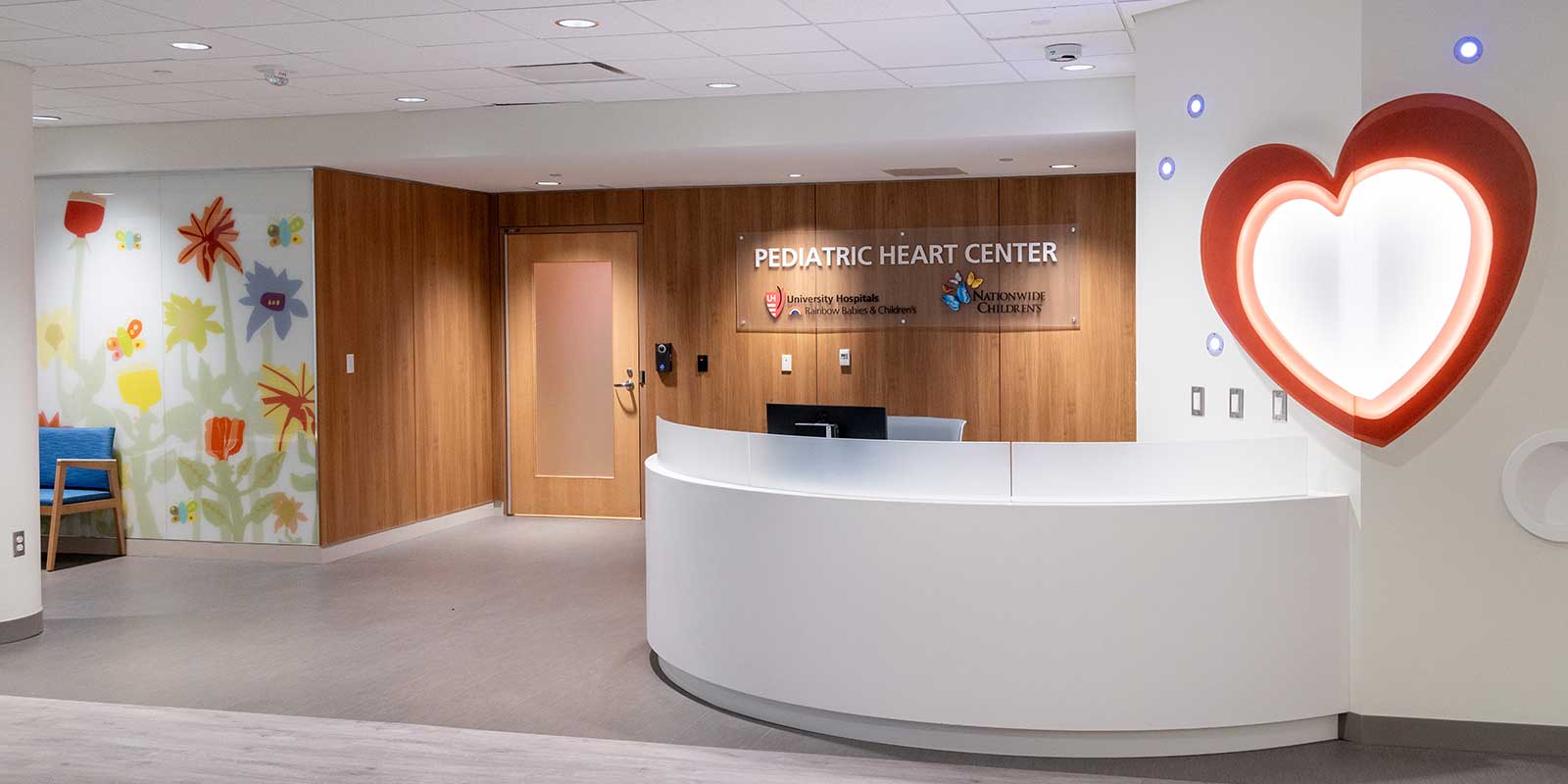
Coarctation of the Aorta
Coarctation of the aorta is a heart defect that causes a narrowing of the aorta, the main blood vessel that carries oxygen-rich blood from the heart to the rest of the body. This congenital defect (meaning the child is born with it) makes it harder for the heart to pump blood through the aorta. Though treatment may not be necessary in mild cases, coarctation of the aorta may require surgery in severe or moderate cases.
Make an Appointment with a UH Rainbow Heart Specialist
To schedule an appointment with one of our pediatric heart experts, call 216-844-3528.Schedule Online
Nurse Advice Line (For UH Rainbow cardiology outpatients): 216-844-7712
What are the Symptoms of Coarctation of the Aorta?
Symptoms of coarctation of the aorta will depend on how much narrowing occurs. In mild cases, there may be few to no symptoms at birth, in which case it may not be diagnosed until later in childhood or adulthood. In infants with severe coarctation of the aorta, symptoms may include:
- Difficulty feeding
- Heart murmur (irregular heart beat)
- Heavy sweating
- Labored breathing
- Pale skin
- Poor growth
Symptoms in milder cases may include:
- Chest pain
- Cold feet or legs
- Dizziness
- Fainting
- Headaches
- High blood pressure
- Leg cramps
- Nosebleeds

Causes and Risk Factors for Coarctation of the Aorta
The cause of coarctation of the aorta is unclear, though genetic changes that happen before birth are often the cause of congenital heart defects. Having certain genetic conditions, such as Turner syndrome, raises the risk of coarctation of the aorta. Additionally, the condition often occurs alongside other congenital heart defects, such as bicuspid aortic valve, subaortic stenosis and patent ductus arteriosus. It is also more common in males than in females.
Diagnosing Coarctation of the Aorta
Severe cases of coarctation of the aorta are usually diagnosed shortly after birth, or sometimes it can be detected on a prenatal ultrasound. Older children and adults may be diagnosed after parents, patients or care providers notice symptoms and seek out an evaluation from a pediatric or adult heart specialist.
Tests to confirm the diagnosis may include:
Chest X-ray
An image of the heart can help show narrowing of the aorta
Echocardiogram (echo)
Uses sound waves to assess your heart’s structure and function
Electrocardiogram (ECG)
Records the heart’s electrical activity over a period of time. If the aortic coarctation is severe, an ECG may reveal thickening of the walls of the lower heart chambers (ventricular hypertrophy)
Cardiac catheterization
A catheter (a thin, flexible tube) is inserted into a vein or artery and guided to the heart in order to introduce dye that will help show a clearer image of the heart. Cardiac catheterization can help determine the severity of the aortic coarctation as well as perform certain treatment procedures
Cardiac magnetic resonance imaging (MRI)
Creates a detailed image of the heart and blood vessels in order to determine the severity of the coarctation of the aorta
Pulse oximetry
A noninvasive test to monitor oxygen level in the blood

Recovering from Surgery
If your child undergoes surgery to treat coarctation of the aorta, they will recover in our state-of-the-art pediatric cardiac intensive care unit (PCICU), where they will be cared for around-the-clock by specially trained pediatric cardiac intensive care medicine physicians, nurses and staff. As they recover, your child will transition from the PCICU to the pediatric cardiac stepdown unit, where they will receive continuity of care by specially trained staff. Before discharge, our cardiac nursing staff will work with families to set up follow-up appointments, educate them on how to care for their child once they return home, and ensure they have the necessary equipment and supplies.
Treating Coarctation of the Aorta
Treatment for coarctation of the aorta will depend on the severity of the condition, along with other factors such as your child’s age and general health, as well as whether they have any co-existing heart conditions. Infants with a severe narrowing may require immediate surgery to correct the defect.
Most newborns and infants will undergo open heart surgery to treat coarctation of the aorta. With this procedure, the pediatric heart surgeon will remove the narrowed section of aorta and sew the ends back together to establish healthy blood flow. In some cases a patch will be used to lengthen the aorta as well. This surgical procedure is done under general anesthesia.
Cardiac catheterization can also be used to correct coarctation of the aorta in certain cases. During this minimally invasive procedure, the pediatric cardiologist will thread a catheter (a thin, flexible tube) with a balloon through an artery in the leg up to the heart. The balloon is then inflated in the narrowed section to expand the aorta. Sometimes a stent (a mesh, metal tube) will also be placed to keep the area open. Catheterization is usually done under sedation, so your child is relaxed but awake.
All procedures to treat coarctation of the aorta are performed in our state-of-the-art hybrid catheterization and surgical suites. Our facility offers cutting-edge technology, including the most advanced imaging available worldwide and 3-D capabilities. This helps our surgeons better understand and visualize each patient’s unique anatomy while making complex repairs, leading to improved patient safety and outcomes.
Follow-Up Care
Most children will recover completely after their procedure and will go on to live healthy, active lives. However, your child will require continued care with a pediatric heart specialist throughout childhood to monitor blood pressure and look out for other potential complications.
Because infants who undergo cardiac surgery are at a higher risk of neurodevelopmental delays, UH Rainbow offers complete developmental assessments through our Cardiac Neurodevelopmental Iniatitive (CaNDI). These evaluations can identify issues early and get children access to early intervention and therapy that can help their long-term development.
Your child should also continue to see a pediatric cardiologist with a specialization in adult congenital heart disease, and the UH Rainbow Heart Center can help with their transition to adult care.


